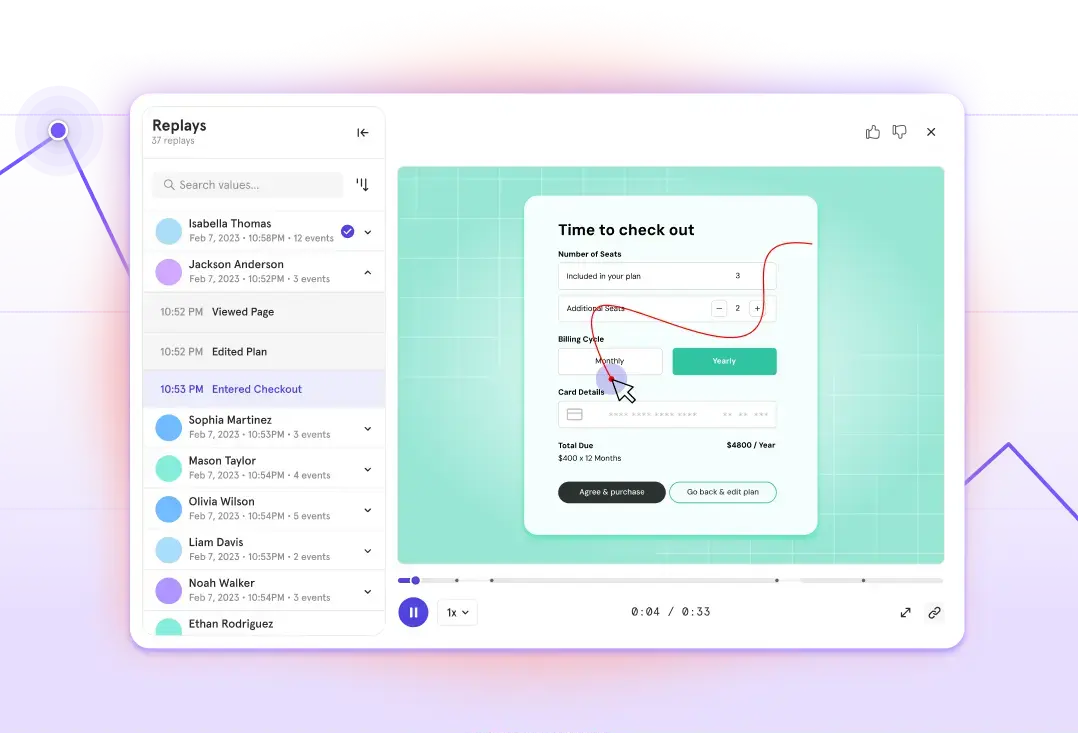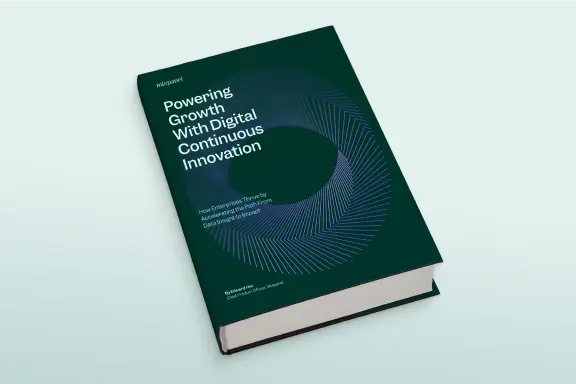How AB Tasty adopted a product-led growth strategy to drive free trial conversions
Company
Founded in 2012, AB Tasty is a global leader in experimentation, personalization, and feature management – enabling companies to validate ideas while maximizing impact, minimizing risk, and accelerating time to market. Enterprises use The AB Tasty Experience Optimization Platform to align product, marketing, and engineering teams and ensure efficiency, reduced costs, and optimal end-user experiences for 1,000+ customers from 10 offices around the world.
Challenge
AB Tasty shifted to a product-led growth strategy and required a tool that allowed teams to easily self-serve insights to see points of friction within the product and easily track utilization. Before implementing Mixpanel, their legacy tool didn’t provide all the analysis required.
Solution
AB Tasty selected Mixpanel to bring its product-led growth strategy to life and optimize the product development lifecycle. Since using Mixpanel, they’ve identified their leader, killer, and filler product features, enabling them to identify and act on product-qualified leads (PQL). AB Tasty continues to enhance its product tour based on understanding where users are dropping off or converting to a free trial.
Results
- 40% improvement in started product tours
- 5x improvement in product tour completion
- Reached goal of converting 20% free trial registrations to product-qualified leads
Without Mixpanel we would be less efficient in making our data actionable which would have all sorts of ramifications impacting our growth. From our product-led growth strategy to our product development life cycle and strategic roadmap planning, Mixpanel is critical to our success.Aaron Stillman Vice President of Product Marketing & Education, AB Tasty

How they did it
Why was Mixpanel selected for product analytics? What else did the team consider?
When the team was looking for a best-in-class product analytics platform, Mixpanel checked all the boxes. The team at AB Tasty wanted an intuitive and easy-to-use interface that would give Product Management, Product Marketing, and others autonomy to pull data. Additionally, we wanted a tool that integrated with tools in our tech stack like Appcues and Segment so data from other sources could be received.
We needed a tool that allowed us to focus on the most relevant KPIs with dashboards tailored for different stakeholders. The team was already utilizing Grafana and considered sticking with this open-source web application, but it didn’t offer all the insights required for product analytics, such as funnel reports.
What’s the culture around data at AB Tasty? Which teams/roles use Mixpanel?
When moving from the USA to Europe for work, I enjoyed hearing my new colleagues talk about “drinking your own champagne” as I had grown up with “eat your own dog food”. I mention this because AB Tasty doesn’t just evangelize the power a data-focused culture can have on growing a business, we also use our platform to “drink our own champagne” by running experiments and managing features throughout the product development lifecycle based on insights gleaned from Mixpanel. Today, the primary teams using Mixpanel are the Product Managers and Product Marketers, however, we’re looking to extend this to other groups such as our Customer Success colleagues. The Customer Success team has a KPI connected to product utilization and will greatly benefit from accessing Mixpanel.
How is Mixpanel used alongside your internal tools? Why do people rely on Mixpanel if there is an internal tool that already exists?
We have a robust tech stack based on customer data platforms (CDPs), behavioral analytics, data visualization software, and product analytics. Segment is used alongside Mixpanel to ensure we have all the data from our internal tools, such as Clearbit. Clearbit is leveraged to help identify a product-qualified lead (PQL).
At AB Tasty we define a PQL based on firmographics and product utilization. Clearbit captures the firmographic data part of the equation and Segment pipes that data into Mixpanel. We combine these sources with the product utilization data to bring visibility and automate the reporting of PQLs. Simply put, we rely on Mixpanel because we needed a best-in-class product utilization platform to continue meeting market expectations and customer demand.
What are some of the questions you and the team are using Mixpanel reports to answer? What metrics do you care about most?
We have predominantly leveraged two types of Mixpanel reports:
- Funnel reports for product tours and customer journeys in the product to help identify points of friction, drop-off points, and if/where we need to focus our efforts.
- Insight reports tracking product utilization, time to value, PQL, and monitoring trends or behavior like number of connections, DAU/MAU/WAU
The metrics we care about most are PQL, Time to Value, MAU/WAU/DAU, product tour funnel analysis/completion rate, specific features utilization, and adoption.
What changes or improvements have you/the team made to the product based on the insights you’ve uncovered in Mixpanel?
At the beginning of our PLG journey and still today, Mixpanel has helped us identify our leader, killer, and filler features as well as identify the quota we associated with certain features during the free trial. For example, Mixpanel helped validate our hypothesis based on qualitative customer interviews that one of our features should be considered a Leader. Importantly, Mixpanel also helped us understand the utilization which informed our decisions around setting the quota.
The product tour continues to evolve based on the funnel analysis and understanding of where users are dropping off. Another Product Manager recognized a call-to-action (CTA) was not being utilized during the early adopter phase, triggering qualitative user interviews and product improvements before General Availability (GA).
Is Mixpanel nice to have or need to have? How would your job be different if you/the team didn’t have Mixpanel?
Mixpanel is a need to have. As we experience hypergrowth and need to scale based on customer demands and market expectations, we would be less efficient in making our data actionable without Mixpanel. From our product-led growth go-to-market strategy to our product development life cycle and strategic roadmap planning, Mixpanel is critical to our success.
What’s your favorite new feature release that Mixpanel made in the past year?
In July, Mixpanel released the ability to view users contributing to any event, at any point in time, across Insights, Funnels, and Retention reports. The list of users could also be saved as a cohort. Not only has it saved us time, but it’s also unlocked a lot of potential as we use AB Tasty products to run experiments, personalize, and manage our features which support the ability to create audiences with Mixpanel cohorts.
We have already been enjoying the ability to view users thanks to this feature release but have also started ideating on the further use of cohorts within AB Tasty products as we continue to “drink our own champagne.”
What have been some of the results of using Mixpanel?
In the very early days of our product-led growth journey, we experienced significant friction with our Product Tour with only a 2% product tour completion rate. Mixpanel and Appcues played a major role in influencing product tour changes. The subsequent version improved to a 15% completion rate. At the same time, we reduced the number of users skipping the product tour by 40%. Although it took a few quarters, we reached the goal of converting 20% of free trial registrations to a PQL.
A Product Manager was able to see a feature within reporting was not being utilized or valued. After following up with some qualitative work, they ultimately decided to kill the feature, which was celebrated. Mixpanel also helped the Product Management team understand a use case associated with targeting a large number of IDs. That has resulted in improved roadmap/future work to ensure the use case is supported more elegantly.
Advice to others looking at a product analytics tool?
The events being generated are critical and a prerequisite to achieving value with a product analytics tool. No matter how good the product analytics tool is, you will not find value without generating clean events. Additionally, give some thought to the business-critical data living in other systems like a Salesforce/Hubspot CRM and make sure the product analytics tool can easily ingest data.
Mixpanel is a key part of the tech stack for any company with a product-led growth strategy or product organizations that want to ensure they’re experimenting, innovating, and optimizing the product most efficiently.Aaron Stillman Vice President of Product Marketing & Education, AB Tasty

Thousands of companies use Mixpanel to build better products. See what Mixpanel can do for your team. Create your free account today.

